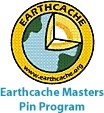
 Pillow lava, also called lava pillows, consist of rounded
lumps of lava typical of eruptions underwater, where the cold
ocean water quickly freezes the hot rock, shaping it into
“pillows,” unlike the lava flows on land that run in long
streams. Film (video) of pillow lava forming shows that the
crust crackles aggressively as it cools. The pillows are
rimmed by chilled glass selvedges. Pillow lava varies in size
from a few centimeters to several meters in diameter. The
shape of pillow lava is usually spherical or elliptical. It is
rounded on the topside and flat or concave at the bottom.
Pillow lava, also called lava pillows, consist of rounded
lumps of lava typical of eruptions underwater, where the cold
ocean water quickly freezes the hot rock, shaping it into
“pillows,” unlike the lava flows on land that run in long
streams. Film (video) of pillow lava forming shows that the
crust crackles aggressively as it cools. The pillows are
rimmed by chilled glass selvedges. Pillow lava varies in size
from a few centimeters to several meters in diameter. The
shape of pillow lava is usually spherical or elliptical. It is
rounded on the topside and flat or concave at the bottom.
This example of pillow lava at San Luis Port (Avila Beach) is
tilted almost vertically forming the cliff wall. This tilting took
place over millions of years since the pillows were laid down,
caused by the movements of the earth’s crust that have created
California’s landscape. These basalt lava pillows at San Luis Port
date from the Jurassic or Cretaceous period about 200 million years
ago and are part of the Franciscan assemblage. The Franciscan is
part of an 800 km long assemblage of similar rocks along the west
coast of North America. The main rocks of the Franciscan Complex
are predominately marine sedimentary rocks such as sandstone and
shale with lesser amounts of marine basaltic rocks and chert as
well as serpentinite, a hydro thermally altered ultramafic (low
silica, high iron and magnesium) oceanic crust.
Pillow Lava I have given two different sets of coordinates for
different abilities. I know that some of us have a difficult time
rock hopping. You can see examples of the pillow lava at both sets
of coordinates, but of course you get a better view from the rocks.
Thus it is best to go on a low tide, but you can still see the
pillow lava at high tide. At high tide you don’t see as much of it,
nor the best formations.
Pillow Lava is volcanic lava flows that erupted under water and
on which a thick crust formed on all sides. There is a very good
example of pillow lava at this location, slightly west of San Luis
Port’s pier near San Luis Obispo, CA. There are also examples of
pillow lava in Cayucos, CA. When at this site look from the rocks
at the edge of the water all the way up the cliff wall.
Logging requirements:
Send me a note with :
- The text "GCPTK9 Pillow Lava, Pillows Too Hard To Sleep On" on
the first line
- The number of people in your group.
- Post a picture of yourself (or gps) at this location if you are
able;
- Examine the size of individual "pillows" to determine if the
size of all the "pillows" are about the same. Send me a note with
your observations and a guess as to why you the sizes are uniform
or not.
To learn more about pillow lava go to: Port San Luis
http://www.cuesta.org/deptinfo/geology/pillow_lava.htm Lecture
notes
http://www.geo.ua.edu/volcanology/lecture_notes_files/pillow_lava.html
Nemo
http://www.pmel.noaa.gov/vents/nemo/explorer/concepts/pillows.html
USGS
http://volcanoes.usgs.gov/Products/Pglossary/PillowLava.html